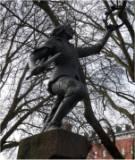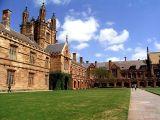 The following are the personal views of the author and do not reflect those of the NSW branch or the Richard III Society as a whole.
The following are the personal views of the author and do not reflect those of the NSW branch or the Richard III Society as a whole.
A while ago, I was asked by one of our branch members, where and when Richard would be re-interred, as she would like to be there. Probably to her great disappointment, I had to tell her that I didn’t know. The original plan was for the reburial to take place in Leicester in May next year, however, with all the controversy and legal challenges it would be better to wait a bit, before making actual travel arrangements.
And unfortunately the situation does not look any clearer so far. There is the so-called ‘Plantagenet Alliance’, which portrays itself as a group of Richard’s descendents. They would like Richard’s final resting place to be in York, whereas the exhumation licence granted last August states that any human remains should be reinterred in consecrated ground closest to the place where they were found, ie. Leicester Cathedral. Therefore they have started to challenge the legality of the exhumation licence. This week legal papers should be lodged with the (UK) High Court, seeking permission for a judicial review of the original licence to go ahead. However, it is not sure whether the High Court will even accept the challenge and any decision is expected to take at least several weeks.
Whether the Plantagenet Alliance will have any success seems dubious. As far as is known, there are no direct descendents of Richard III, his legitimate son had predeceased him and his illegitimate children died without issue, which leaves descendents of his brothers and sisters. The group apparently consists of 15 of these distant relatives. After 500 years, this is a surprisingly low number, as the University of Leicester estimates that “many tens of thousands of individuals alive today are descended in this way”.
The legal claim of the Plantagenet Alliance is based on the fact that they were not consulted before the exhumation licence was granted – and we have to remember that at that time it seemed rather unlikely that any human remains, let alone Richard’s, would be found. They argue the licence was in breach of Article 8 of the European Convention on Human Rights, which grants the right to respect for private and family life. After 500 years to claim “respect of family life” seems a bit strange, after all we are not talking about a dearly beloved uncle, who used to come round for tea. The University of Leicester refutes this saying that the obligation to consult living relatives expires after 100 years.
I tried to find out a bit more about the Plantagenet Alliance. It is a private limited company, with a relatively new website (their archives only go back to March 2013). They are asking for donations to help fund the day-to-day running of their affairs as well as the legal campaign.
For my part, I rather donated to the Richard III Society’s appeal for funds for a tomb for Richard, than giving money for a business to go to court.
There certainly are valid arguments in favour of a re-interment in York rather than Leicester, however, these are not furthered by challenging the legality of the original licence. If only all concerned could stop arguing their case with increasing animosity, which, while the media might love it, is very sad and in bad taste.
The Patron of the Richard III Society, Prince Richard, Duke of Gloucester, who shares his name and title with the medieval king before his accession to the throne, has pleaded that his remains “are treated with the utmost dignity”. I am sure that his discussion partners Dr Philip Stone, chairman of the Richard III Society, and Philippa Langley, who had pushed tirelessly for the dig to take place, share his sentiments completely. As does the University of Leicester, who pledges to “continue to work with our partners, the Richard III Society, Leicester Cathedral and Leicester City Council to ensure an appropriate and fitting re-interment for England’s last Plantagenet monarch in Leicester.”
HRH Richard, Duke of Gloucester, also attended a lunch with the Richard III Society, whose patron he has been for more than 30 years, at the Tower of London recently.
References:
Kate Liptrot, ‘Richard III legal fight to start next week’, The Press (27 April 2013).
University of Leicester Press Office, ‘Plantagenet Alliance seeks judicial review – statement from University of Leicester’ (26 March 2013)
‘Duke Of Gloucester Meets With Richard III Society Over King’s ‘Dignity’’, Royal Central (2 March 2013).
‘Duke Of Gloucester Attends Richard III Society Dinner At Tower Of London’, Royal Central (30 April 2013)
Tags: Archaeology, Leicester, Leicester Greyfriars Dig, Richard III, Richard III Society



